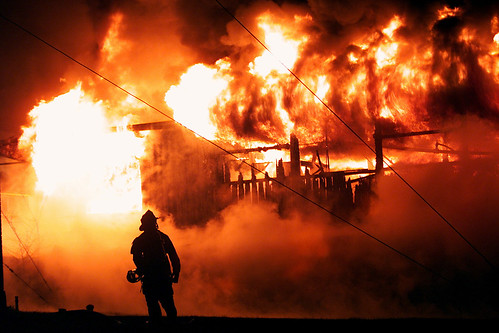Some of you may be followers of Derek Lowe's popular "Things I Won't Work With" series where he highlights especially nasty chemicals (y'know, above and beyond the ones that are preventing our river from freezing).
I am pretty pleased to nominate the below compound as worthy of a post from Lowe (and also a 6" thick blast shield):
The molecule comes from a JACS ASAP that was published by a former undergrad student in our group who has since gone on to do some crazy explosives chemistry in grad school in Munich (you'll need subscriber access to be able to read the article).
For any non-chemists in the house, one rule of thumb for judging the explosivity (a term I just made up) of an organic molecule is the ratio of C to N atoms. The more N, the more likely it is to blow sky-high. TNT (2,4,6-trinitrotoluene), the industry standard for a good explosive, has a C:N ratio of 7:3, whereas the above compound has a staggeringly low 1:5![1]
You'd have to have cojones made out of titanium carbide to be able to work with this stuff on a regular basis. Judging by the experimental, they take some serious precautions (and this is coming from a person who works with hydrofluoric acid every day):
5-Nitrotetrazole-2N-oxide and its salts are all energetic compounds with sensitivity to various stimuli. While we encountered no issues in the handling of these materials, proper protective measures (face shield, ear protection, body armor, Kevlar gloves, and earthened equipment) should be used at all times.
Congratulations, Davin! Don't explode your face off, ok?
[1] There are several other commercial explosive materials out there that have a much lower C:N ratio such as RDX, and even crazier compounds are out there in the literature. But Davin's lab is actually conducting explosion tests (i.e., going out of their way to actually blowing things up!). Cr-a-a-z-y.

